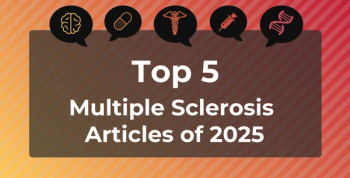
Advances in MS Therapies Reshape the Treatment Landscape
Key Takeaways
- Monoclonal antibody DMTs, especially anti-CD20 therapies, effectively prevent relapses but have limited impact on progressive MS.
- Progressive MS involves compartmentalized CNS inflammation, with microglia playing a significant role in disease progression.
Discover the latest advancements in multiple sclerosis (MS) treatment, including innovative therapies and strategies for disease prevention and repair.
The treatment of
The Multiple Sclerosis International Federation claims that about 2.9 million people globally live with MS, and the prevalence of the disease has gone up dramatically since 2013 (2.3 million), which has often been attributed to improved diagnostic techniques and longer lifespans of people with MS.2
“Success will require development of closely interlocking teams and consortia bridging institutions and disciplines, including non-traditional ones. For those entering the field today, one thing seems certain: the work will be more interesting and rewarding than ever before and also likely to provide a few more surprises. Most important, MS will become—to paraphrase Einstein—a simpler problem to treat, prevent, and cure,” the review authors summarized.1
A breakthrough came with the development of monoclonal antibody disease-modifying therapies (DMTs). These therapies, which include rituximab, ocrelizumab, and ofatumumab, have proven highly effective at preventing relapses and new brain lesions. These drugs work by either depleting or blocking the migration of white blood cells into the
Among these DMTs, the anti-CD20 therapies emerged as a first-line choice for many patients. These agents are highly selective, targeting mature B lymphocytes while sparing other crucial immune cells, which contributes to their excellent safety record. The success of these agents provided strong evidence that the peripheral immune system plays a direct role in MS disease activity.
Despite the success of these treatments in preventing relapses, their impact on disability worsening in progressive MS has been only modest. This limited effectiveness is a central challenge in MS care. Researchers hypothesized that inflammation in progressive MS becomes compartmentalized within the CNS, making it difficult for peripherally administered antibodies to penetrate the blood-brain barrier. Additionally, the limited success of other brain-penetrant drugs in progressive MS suggested that pathological processes beyond a dysregulated adaptive immune system also contribute to the disease’s progression.
The authors said that evidence points to more progressive pathologies that drive irreversible disability, known as silent progression. This can occur even when patients have no clinical relapses or new lesions. The innate immune system, particularly microglia, appears to play a greater role in this phase of the disease. Chronically activated microglia are associated with axonal injury and neuronal loss, suggesting that targeting these cells could be a key strategy for addressing progression.
This understanding has led to the development of a new era of therapeutics. One promising approach is the use of Bruton tyrosine kinase (BTK) inhibitors. BTK is an enzyme present in both B cells and microglia. By using BTK inhibitors that can cross the blood-brain barrier, researchers hope to control both peripheral B-cell activity and microglial-mediated neuroinflammation within the CNS. The varied results from recent trials suggest that the ability to effectively penetrate the CNS may be critical for a BTK inhibitor's success against disability progression. Another innovative approach is the use of chimeric antigen receptor T (CAR T) cells, a form of gene therapy that has shown promise in other autoimmune diseases. A single infusion of CAR T cells could potentially provide a lasting "reboot" of the immune system by eliminating pathogenic B-cell populations.
Looking toward the future, the authors said more research is needed for primary prevention. For instance, there is a well-established link between exposure to the Epstein-Barr virus and the development of MS. More recently, a specific antibody biomarker for MS was identified in the serum of some presymptomatic individuals. This finding, combined with other markers, could allow clinicians to identify and treat at-risk individuals before the onset of clinical symptoms, preventing the disease from ever taking hold.
The authors emphasized, “The questions that require answers in the future are unlikely to be answered solely or even largely by the pharmaceutical industry, or by traditional billion-dollar trials. New technologies, such as novel platforms for immune diagnosis and monitoring, and artificial intelligence and machine learning, to interrogate large medical databases, among others, are certain to assume an increasing important role.”
References
1. Sabatino JJ, Cree BAC, Hauser SL. New horizons for multiple sclerosis therapy: 2025 and beyond. Ann Neurol. 2025;98(2):317-328. doi:10.1002/ana.27270
2. Number of people with MS. MS International Federation’s Atlas of MS. Accessed August 7, 2025.
Newsletter
Stay ahead of policy, cost, and value—subscribe to AJMC for expert insights at the intersection of clinical care and health economics.







































